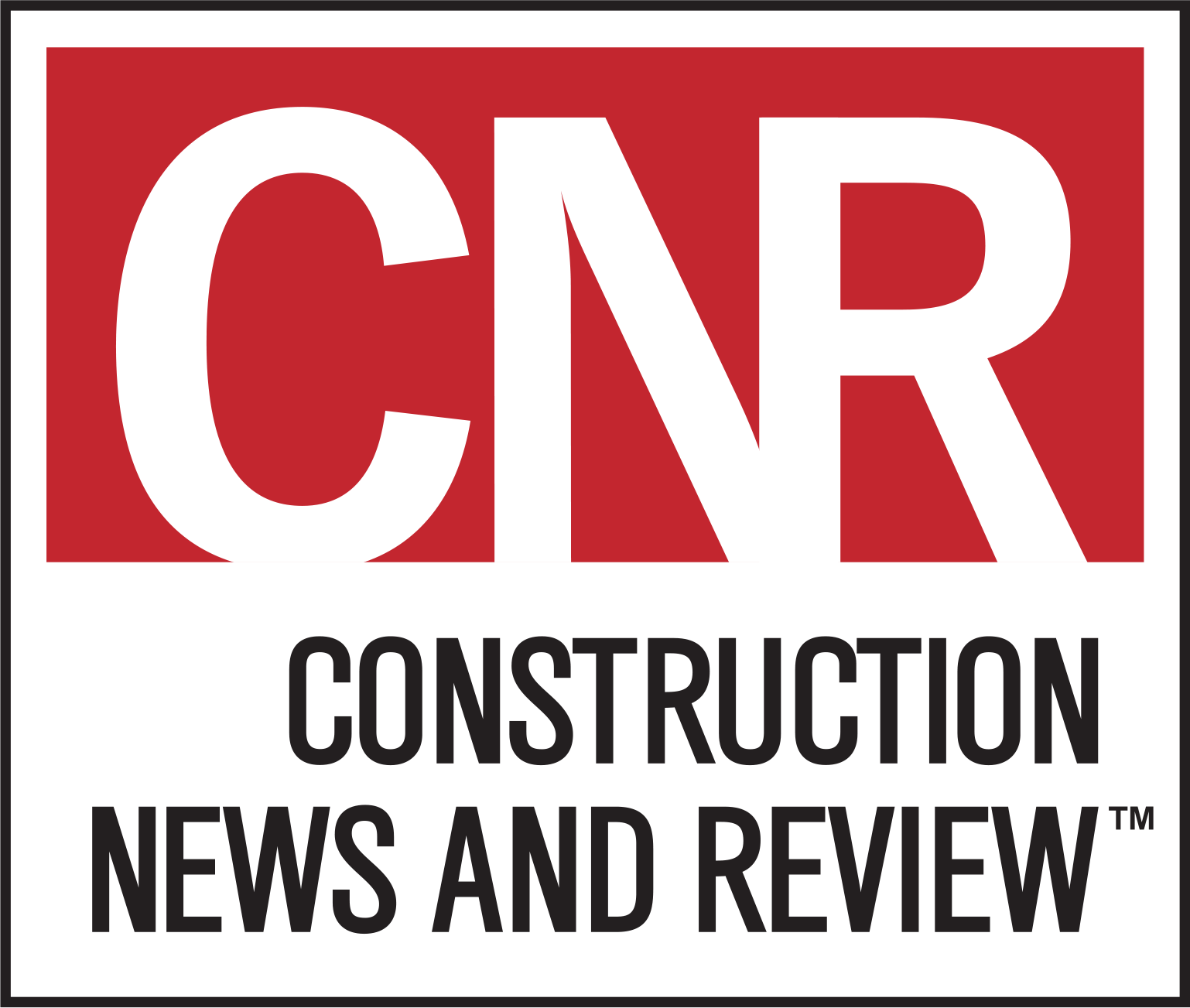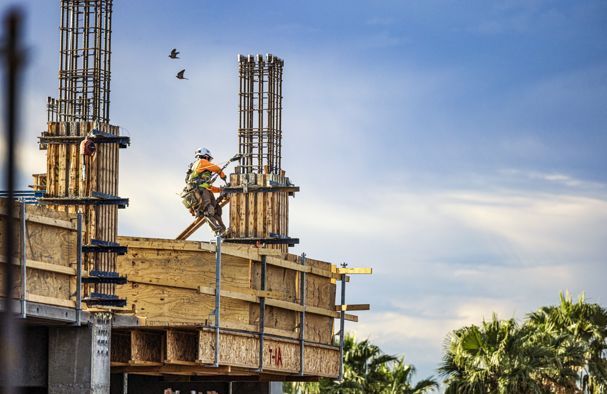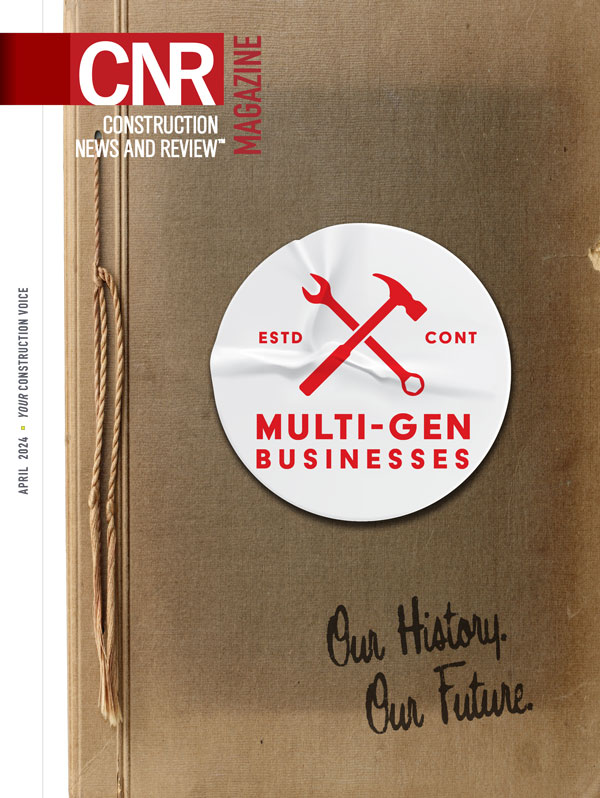Construction Insurance Premiums Are On the Rise
By BARBARA HORWITZ-BENNETT
Coinciding with rising building material prices, labor costs and inflation, construction companies are seeing an increase in their insurance premiums in 2024.
While contractors with good reputations and strong worker safety policies in place are generally locking in the same Workers’ Compensation rates, this is not the case with General Liability and Builder’s Risk, the latter of which is subject to the whims of increasing natural disasters.
“Extreme weather delays and losses continue to impact almost half of construction projects worldwide each year,” states Craig Tappel, chief sales officer and risk advisor with HUB International’s North American Construction Specialty Practice, Brentwood, Tenn.
In 2023, the U.S. experienced a record number of billion-dollar weather-related disasters, with wildfires and earthquakes contributing to increased natural catastrophes.
“It costs substantially more for materials and labor today and the insurance cost increases with these changes in exposure,” adds Tappel. “Further, supply chains are still in disarray from the pandemic, and contractors are challenged to maintain the quality of the work with fewer experienced workers and substitute materials,”
This pressure to hire less qualified workers to keep up with building demands often means they were also rushed through their safety and training process, thereby placing them at a higher risk for workplace accidents.
Also part of the mix, newer project types, delivery methods and materials—including mass timber, renewable energy and modular construction—are increasing risk.
For example, Kent W. Collier, a managing principal with Atlanta-based Greyling Insurance Brokerage & Risk Consulting, a division of EPIC, points out that design-build projects are increasingly producing large professional liability claims for design-builders and sub-consultant design professionals, particularly on mega projects over $1 billion in construction values.
Regional Risks
With a rise in natural disasters occurring in coastal areas, construction projects in these regions should expect to pay more in coverage, which includes insuring stored materials. Locales places like Florida, with its hurricane and flooding exposure, and California, where issues like wildfires and mudslides are more prevalent, are prime examples.
According to Tappel, construction firms can expect a 5% to 15% increase in rates for construction projects located in high-hazard areas due to this rise in severe weather-related events.
Meanwhile, New York state general liability insurance premiums are growing, according to Collier. This is driven by third-party action over claims related to the New York Labor Law, which incidentally is the only state with such a strict liability statute.
In addition, jurisdictions with poor reputations for nuclear verdicts are also experiencing general liability insurance pressures including Georgia, Pennsylvania, California, New York, Louisiana, Florida, New Jersey and Texas.
In addition to location, other factors impacting insurance rates include project types, the size of the contractor’s fleet, the quality of the firm’s auto loss control efforts and the effectiveness of the company’s safety program on protecting its workers, equipment and materials.
The latter is important as underwriters are better equipped to identify firms that have simply been lucky versus those who are effectively limiting exposure to risk and large claims, notes Collier.
Mitigating Risk
To better protect employees and jobsites, thereby mitigating the risk of accidents and theft, some contractors are leveraging technology like telematics, cameras, drones, wearables and robotics. The application of these types of strategies can also lower insurance premiums.
In addition, Ted Wickenhauser, executive vice president risk management with McCarthy Holdings, Inc., St. Louis, recommends building strong carrier relationships to create a comprehensive insurance program; seeking competitive pricing opportunities, terms and conditions; and engaging in proactive claim management.
While the above-noted factors impacting premiums are significant and not expected to let up any time soon, Wickenhauser observes one favorable variable.
“New insurance capacity continues to enter the marketplace, which will create increased competition and should ultimately moderate and/or possibly bring down rates overtime,” he says.
Photo courtesy of McCarthy Holdings, Inc.
Fresh Content
Direct to Your Inbox

YOUR CONSTRUCTION VOICE IN ST. LOUIS AND BEYOND
Join CNR Magazine today as a Content Partner
As a CNR Content Partner, CNR Magazine promises to support you as you build, design and engineer projects not only in and around St. Louis, but also across the U.S. CNR is equipped and ready to deliver a dynamic digital experience paired with the top-notch, robust print coverage for which you’ve always known and respected the magazine.






